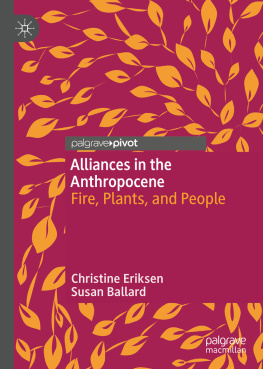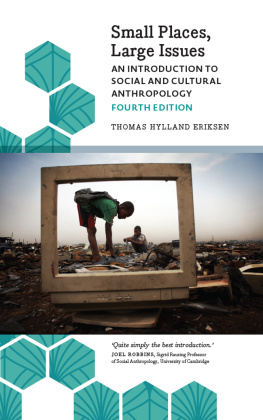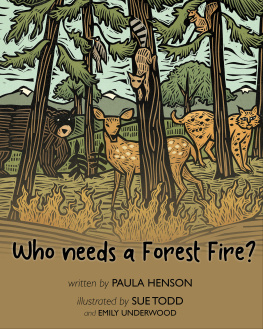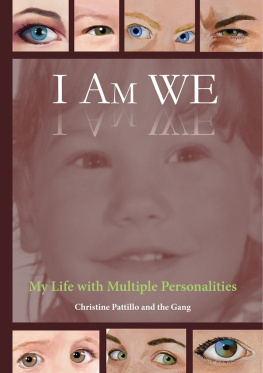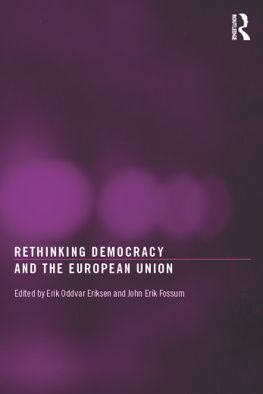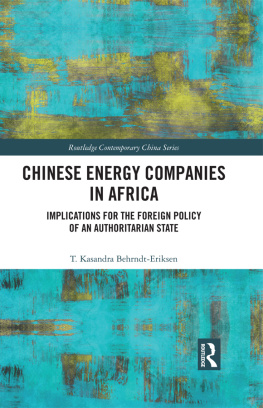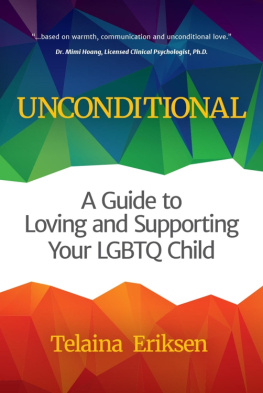Christine Eriksen - Alliances in the Anthropocene: Fire, Plants, and People
Here you can read online Christine Eriksen - Alliances in the Anthropocene: Fire, Plants, and People full text of the book (entire story) in english for free. Download pdf and epub, get meaning, cover and reviews about this ebook. year: 2020, publisher: Springer Nature, genre: Home and family. Description of the work, (preface) as well as reviews are available. Best literature library LitArk.com created for fans of good reading and offers a wide selection of genres:
Romance novel
Science fiction
Adventure
Detective
Science
History
Home and family
Prose
Art
Politics
Computer
Non-fiction
Religion
Business
Children
Humor
Choose a favorite category and find really read worthwhile books. Enjoy immersion in the world of imagination, feel the emotions of the characters or learn something new for yourself, make an fascinating discovery.
- Book:Alliances in the Anthropocene: Fire, Plants, and People
- Author:
- Publisher:Springer Nature
- Genre:
- Year:2020
- Rating:4 / 5
- Favourites:Add to favourites
- Your mark:
- 80
- 1
- 2
- 3
- 4
- 5
Alliances in the Anthropocene: Fire, Plants, and People: summary, description and annotation
We offer to read an annotation, description, summary or preface (depends on what the author of the book "Alliances in the Anthropocene: Fire, Plants, and People" wrote himself). If you haven't found the necessary information about the book — write in the comments, we will try to find it.
Alliances in the Anthropocene: Fire, Plants, and People — read online for free the complete book (whole text) full work
Below is the text of the book, divided by pages. System saving the place of the last page read, allows you to conveniently read the book "Alliances in the Anthropocene: Fire, Plants, and People" online for free, without having to search again every time where you left off. Put a bookmark, and you can go to the page where you finished reading at any time.
Font size:
Interval:
Bookmark:
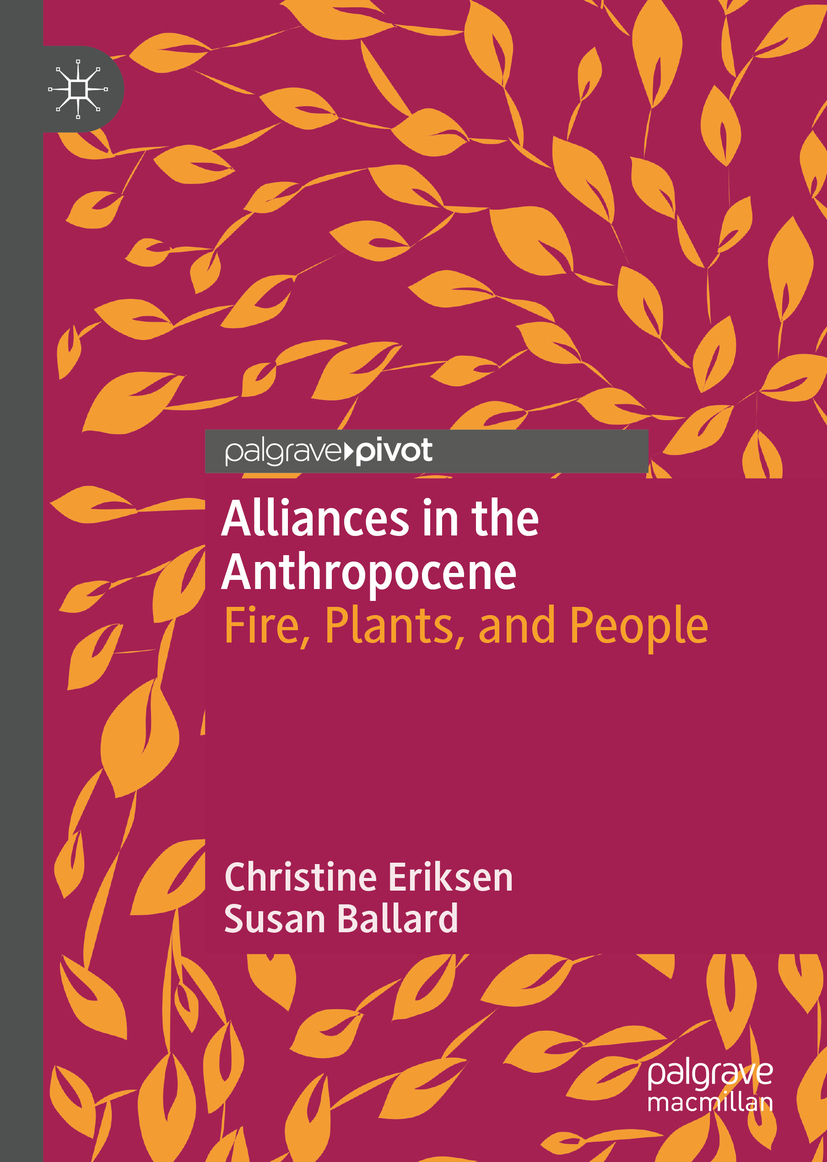

Cover Pattern Melisa Hasan
This Palgrave Pivot imprint is published by the registered company Springer Nature Singapore Pte Ltd.
The registered company address is: 152 Beach Road, #21-01/04 Gateway East, Singapore 189721, Singapore
As I sit down to write, Tasmania is on fire. Literally. Ten bushfires are burning out of control for the third week, with little respite in sight. Firefighters are exhausted. The smoke blanketing Hobart, the capital of Tasmania , is pervasive. I have been here a week. My lungs feel constricted. There is a dull ache in my head. I want to leave and I can. But for the majority of Tasmanians there is no escape for weeks to come. And that is the crux of the matter. The way bushfires have been burning in Australia and internationally for the past decade points to a future where there will be more fires, more smoke , more pain. How are we to mitigate and adapt to such a fiery future? Only a month ago I stood with my boots in the ashes of where this fiery future has become a lived reality in Northern California. For the first time in my research career, I arrived at a study site not seeking new participants but instead hoping and praying that participants I had worked with since 2011 were still alive. On 8 November 2018, a wildfire travelling at an impossible speed erased the town of Paradise and its neighbouring communities14,000 homes reduced to ashes, 86 lives lost. Watching from across the Pacific Ocean, my heart went out to friends, colleagues and everyone impacted by the Camp Fire in Butte County. I had to go back. The pull attached to the hope and grief I was feeling was strong. It felt like it was only yesterday I had visited and spoken with these communities about their recovery from the devastating 2008 fires. Back then, in their grief, everyone pointed up the ridge, said how lucky it was that the fire had not reached Paradise . Ten years later, Paradise was out of luck . Is this what survival in the Anthropocene has come to luck , hope, grief? Or is this how it has always been? If so, why?
I am on Anaiwan Country. I have just flown an hour north from Sydney in a small plane skimming over the bodies of barely living trees silhouetted against the brown dust of land no longer fit for farming . Here and there I see hoof prints belonging to flocks of four-footed animals, who along with British farmers began violently occupying this Country 200 years ago. Now they, like the trees, are searching for water . It is the furthest I have been from the coast, ever. It feels like it has not rained for months. The air is paused and somewhere not far from here bushfires are burning. The smell has come into town and I am afraid to raise my eyes to the shallow hills that surround Armidale , just in case. Just in case I might see the unpronounceable, unknowable, billowing shape of the pyrocumulonimbus clouds that signify fire. The air is thick. If this were a movie, the scriptwriter would make a note in the margin: hold the calm, the apocalypse is coming. And the film would cut between the ridgelines and images of a sprinkler on a deep green lawn amidst a clear blue sky. As much as I work to avoid the trauma-focused media scream, it is hard to escape the smell of the future. I am afraid that even here among Aboriginal Elders whose ancestors have lived with fire for over 60,000 years, we will catch it: the miasma of climate change. It is too hot inside so I sit under a tree and listen to drifts of conversation: a family has driven back across the fire break at Tingha to collect some personal documents; another is unable to get back to their horses; they are worrying about the dogs. The Rural Fire Service trucks have returned to town empty: Its so fierce. This fire is raging. All their water has gone too. Later in the day at the Armidale Aboriginal Community Garden, we gather in front of an exhibition by Aboriginal artist Gabi Briggs called Surviving New England: Our Koori Matriarchs. We listen to voices as they sing Country. But all I can do is stare off to the horizon. The thinking and feeling of the fires pervade my skin. I hold my breath.
Narratives do not mirror, they refract the past. Imagination and strategic interests influence how storytellers choose to connect events and make them meaningful for others. Narratives are useful in research precisely because storytellers interpret the past rather than reproduce it as it was. The truths of narrative accounts are not in their faithful representations of a past world, but in the shifting connections they forge among past, present and future. (Riessman 2006, 189)
Font size:
Interval:
Bookmark:
Similar books «Alliances in the Anthropocene: Fire, Plants, and People»
Look at similar books to Alliances in the Anthropocene: Fire, Plants, and People. We have selected literature similar in name and meaning in the hope of providing readers with more options to find new, interesting, not yet read works.
Discussion, reviews of the book Alliances in the Anthropocene: Fire, Plants, and People and just readers' own opinions. Leave your comments, write what you think about the work, its meaning or the main characters. Specify what exactly you liked and what you didn't like, and why you think so.

